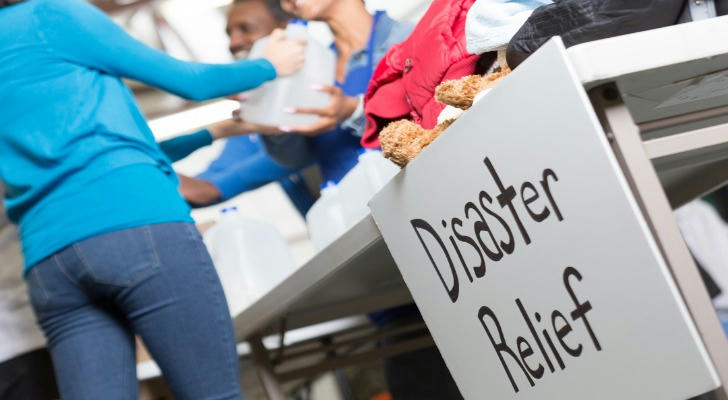How to Get Disaster Relief Support in the U.S. — Without Guesswork
When a storm, flood, or wildfire hits, most people aren’t thinking about government programs. They’re thinking about bills, lost work, and how to stay afloat. Here's a direct, clear guide for getting real assistance fast—especially if you've lost income due to a natural disaster.

This article walks you through what to do right now, including:
- Who qualifies for Disaster Unemployment Assistance (DUA)
- How to apply even if you’re self-employed or lost documents
- Where to find temporary jobs in your area through federal grants
- A real story of a disaster survivor who got help — and how you can too
💸 1. Lost Work Due to Storms or Floods? Start Here
✅ What You Might Be Eligible For:
- Disaster Unemployment Assistance (DUA): Income support for people who lost work due to a federally declared disaster.
- Dislocated Worker Grants (DWG): Government-funded jobs for cleanup, food service, and logistics after a disaster.
📝 How to Check If You Qualify:
You may be eligible if:
- Your workplace was damaged or destroyed
- Roads or utilities made it impossible to work
- You had a job offer that fell through because of the disaster
- You're self-employed and can prove income loss
📍 IMPORTANT: FEMA must declare your area a disaster zone before DUA or DWG opens.
🛠️ 2. How to Apply for Disaster Unemployment Assistance (DUA)
Step-by-Step Guide:
Visit your state’s unemployment website
You can find your specific state UI portal viaFile a claim under “Disaster Unemployment”
Select your disaster area, fill out the form, and include:- Proof of income (pay stub, tax return, or letter from employer)
- Proof of identity and address
- Brief explanation of how the disaster affected your work
Track your application
Most states provide weekly claim updates. Expect approval in 5–14 days.
📌 Note: Self-employed individuals can use bank statements, 1099s, or invoices to show lost income.
👷 3. Looking for Work? Try DWG-Funded Jobs
After major disasters, the U.S. Department of Labor funds temporary local jobs to help communities rebuild. These are often in:
- Debris cleanup
- Food distribution
- Construction support
- Case management and call centers
These positions are paid, short-term, and open to those who lost jobs due to the disaster—even without prior experience.
🧭 Where to look:
- Your local American Job Center
- State labor department websites
- Community bulletins or FEMA assistance offices
🧾 Real Story: How a Single Mom Got Back on Her Feet After a Hurricane
Name: Tanya R.
Location: Lake Charles, Louisiana
Disaster: Hurricane Laura (2020)
Tanya worked two part-time jobs: one at a daycare and another at a hotel. After the hurricane hit, both shut down. With two kids and zero income, she had no idea how to pay rent.
She heard about Disaster Unemployment Assistance on the radio and decided to try:
- She applied online using her phone.
- Attached her last two pay stubs and a letter from the hotel saying it was closed.
- Within 10 days, she was approved and started receiving $248/week.
Later, she signed up for a temporary food bank job funded by DWG, earning minimum wage but regaining a routine.
"I didn’t know I could get unemployment if I wasn’t full-time. I’m so glad I tried—it helped me keep my home and my dignity."
📍 Key Tips for Applying
- Act fast: DUA is only available for a limited time after a disaster is declared.
- No job is too small: Part-timers, gig workers, and even newly hired individuals may qualify.
- No need for a title: If you lost a job offer or your workplace closed, you can still apply.
- Follow up weekly: Most states require you to recertify your situation weekly.
✅ 🎯 Final Reminders
If you’re recovering from a disaster, you don’t have to wait or guess your next step. There are systems in place—though they may be imperfect—that are built to support your recovery.
- Check FEMA’s disaster declarations
- Go to your state unemployment office or apply online
- Ask about DUA and DWG job opportunities
- 🎯 Don’t wait to file—every day counts
